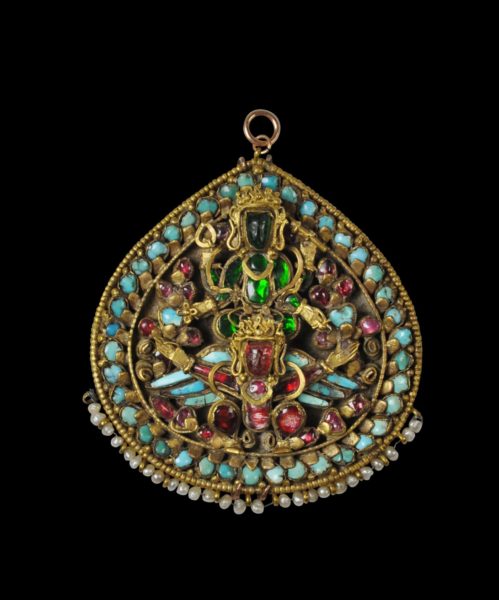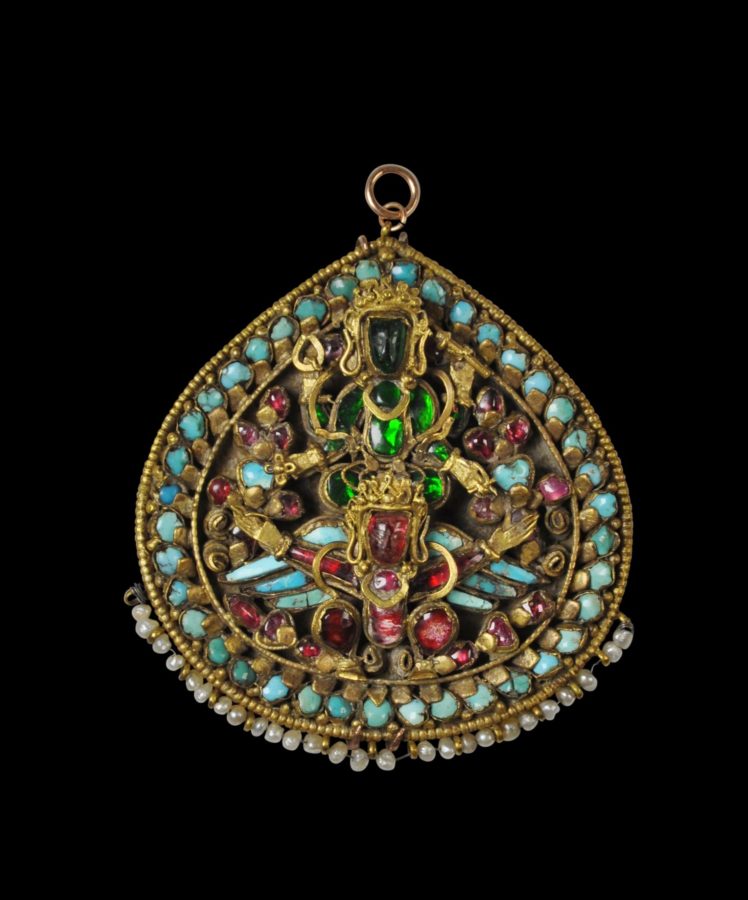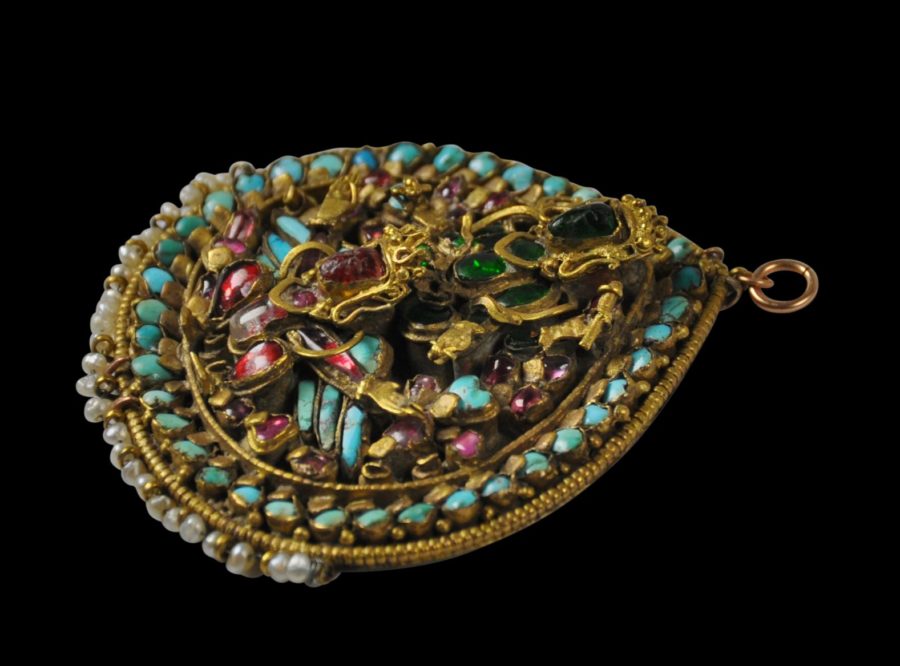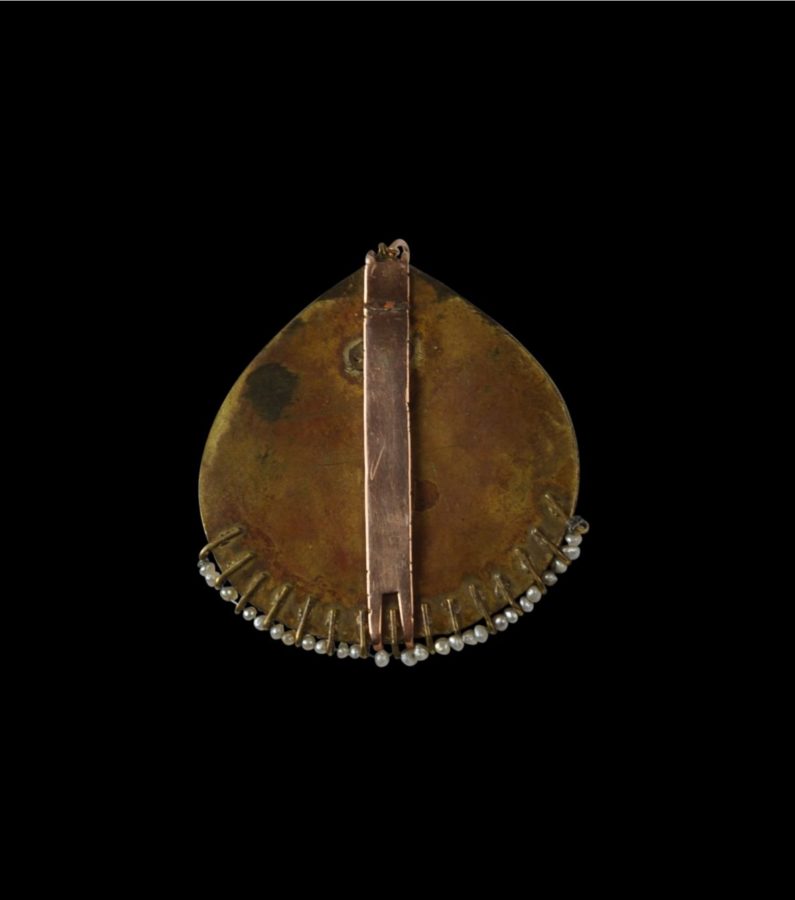This pendant possibly was meant to decorate a statue if not an actual person. It might have served as a forehead ornament (bindia).
It is of gilded (gold-plated) copper and silver set with turquoise, rubies or spinels and green glass. The lower edge is fringed with tiny pearls threaded onto fine wire. The edge itself is bordered with gilded, pearled wire.
It is the largest of this type of ornament that we have seen.
It shows Vishnu seated on his vahana Garuda. The bodies of both are defined by applied gilded, flattened wire that has been inset with stones and glass. The faces of each have been carved.
The wings of the Garuda are set with long slithers of turquoise.
The outer border of the pendant is set with dozens of beautifully coloured turquoise cabochons, each in a gilded box setting.
It is a particularly fine example of Newar metalwork from the Kathmandu Valley. A related example is held by the British Museum. Another is in the Victoria & Albert Museum (see Clarke, 2004, p. 115). Another is illustrated in Ghose (2016, p. 80).
The metalwork includes pearled filigree wire which is a Newari trademark.
The use of coloured glass rather than all gems suggests an earlier rather than a later dating for the piece. Tibetan jewellers tended to use precious gems earlier than Nepalese jewellers who do not seem to have had access to the same trade routes from which precious gems were sourced. The use of glass rather than gems is associated more with 18th century Nepalese jewellery. Most probably the glass was traded into Nepal from Beijing.
The piece is in excellent condition. A later, non-intrusive gold strip has been secured to the reverse by means of claws and to this has been attached a small loop to allow the piece to be worn more easily as a pendant.
References
Casey Singer, J., Gold Jewelry from Tibet and Nepal, Thames & Hudson, 1996.
Clarke, J., Jewellery of Tibet and the Himalayas, V&A Publications, 2004.
Ghose, M. (ed.), Vanishing Beauty: Asian Jewelry and Ritual Objects from the Barbara and David Kipper Collection, Art Institute of Chicago, 2016.
Rana, P., P. Rana & G. Rana, The Ranas of Nepal, Timeless Books, 2003.





